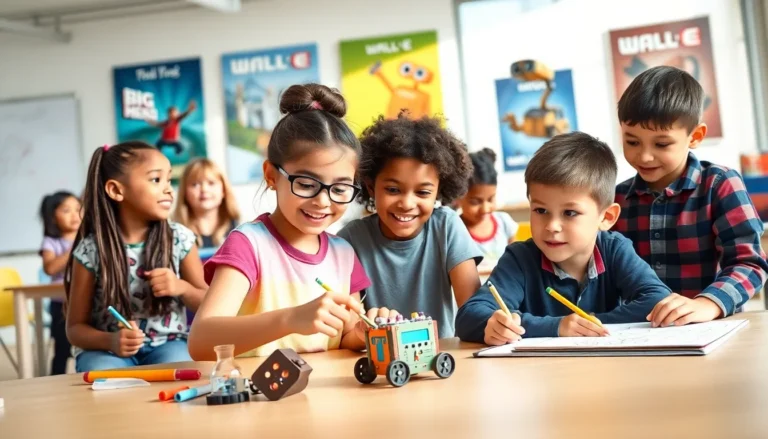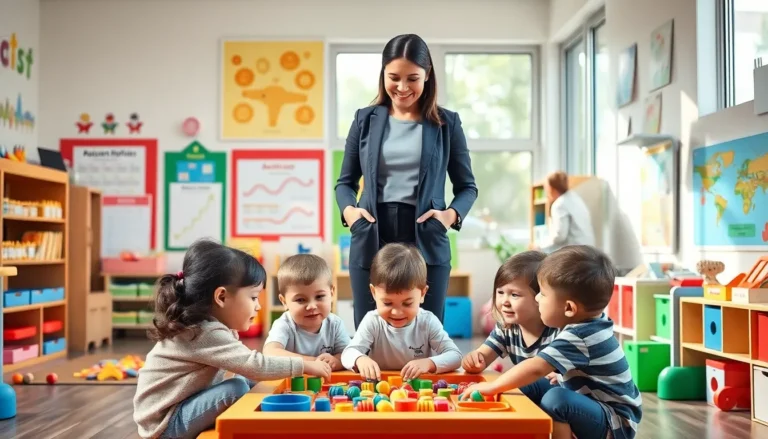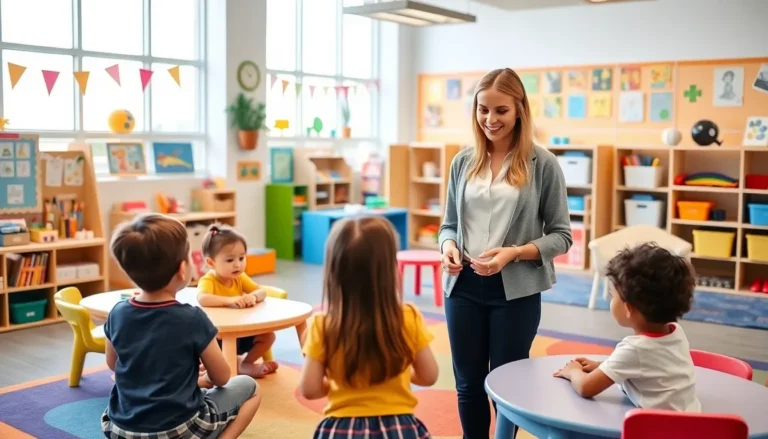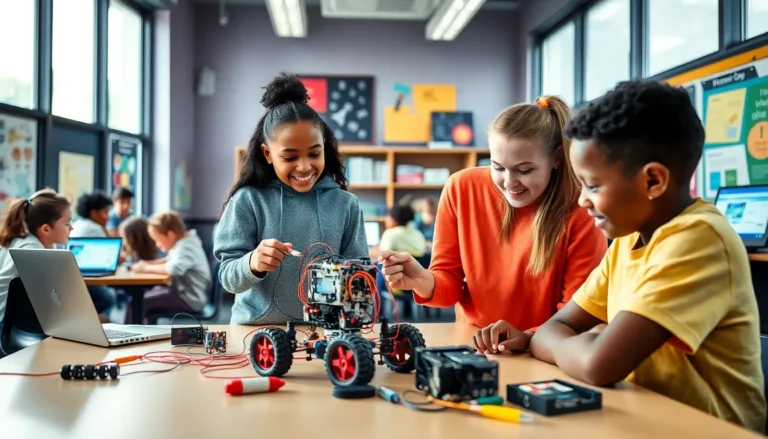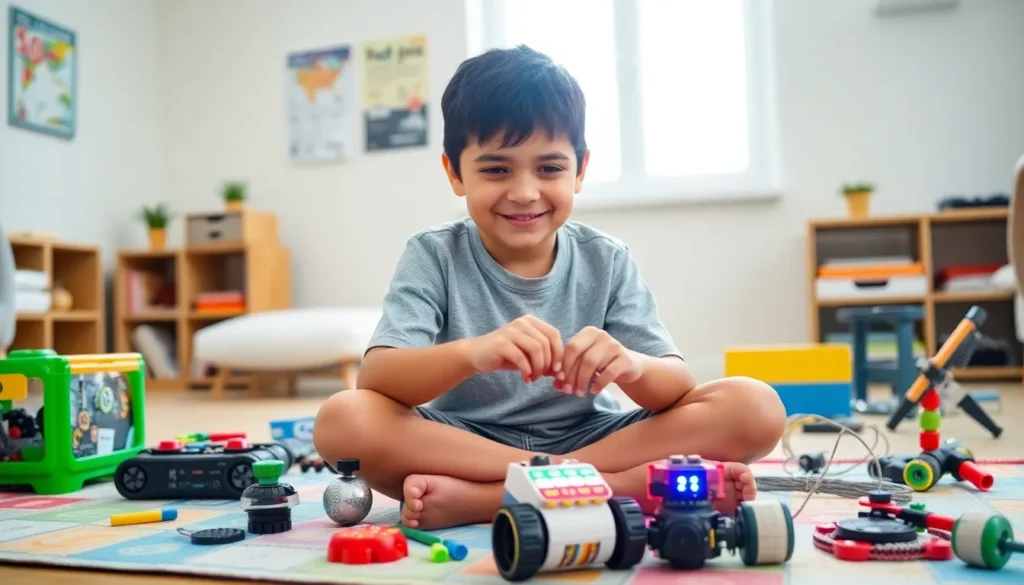Table of Contents
ToggleIn a world where technology continually shapes childhood experiences, robotic toys have emerged as a captivating blend of play and learning. These innovative gadgets not only entertain but also spark curiosity and creativity in young minds. With interactive features and engaging designs, they offer children a unique way to explore STEM concepts while having fun.
Parents and educators alike are embracing the benefits of robotic toys, recognizing their potential to foster critical thinking and problem-solving skills. From programmable robots that teach coding basics to interactive companions that respond to commands, these toys are redefining playtime. As kids engage with these high-tech playmates, they’re not just having a blast; they’re also developing essential skills that could benefit them in the future.
Overview of Robotic Toys Kids
Robotic toys create a unique intersection between play and education. They serve as powerful tools that engage children in learning fundamental STEM concepts. Robotic toys include various forms, such as programmable robots, remote-control gadgets, and interactive companions.
Key Benefits of Robotic Toys
- Enhances Problem-Solving Skills
Robotic toys require kids to tackle challenges, enhancing their analytical skills. They often need to devise solutions for programming tasks or navigate obstacles.
- Fosters Creativity
Many robotic toys allow for customization and imaginative play. Children design their robots or programs, encouraging creative thinking.
- Promotes Collaboration
Group activities with robotic toys foster teamwork and communication. Kids often work together, sharing ideas and strategies to achieve common goals.
Types of Robotic Toys
| Type | Description |
|---|---|
| Programmable Robots | Robots that kids can program to perform tasks. They range from simple coding interfaces to advanced robotics. |
| Remote-Control Toys | Toys operated via remote control, teaching mechanics and spatial awareness. |
| Interactive Companions | Robots that engage in conversations or games, promoting social interaction. |
Robotic toys not only provide entertainment but also prepare children for an increasingly digital world. Their multifaceted benefits make them invaluable tools for developmental growth.
Benefits of Robotic Toys
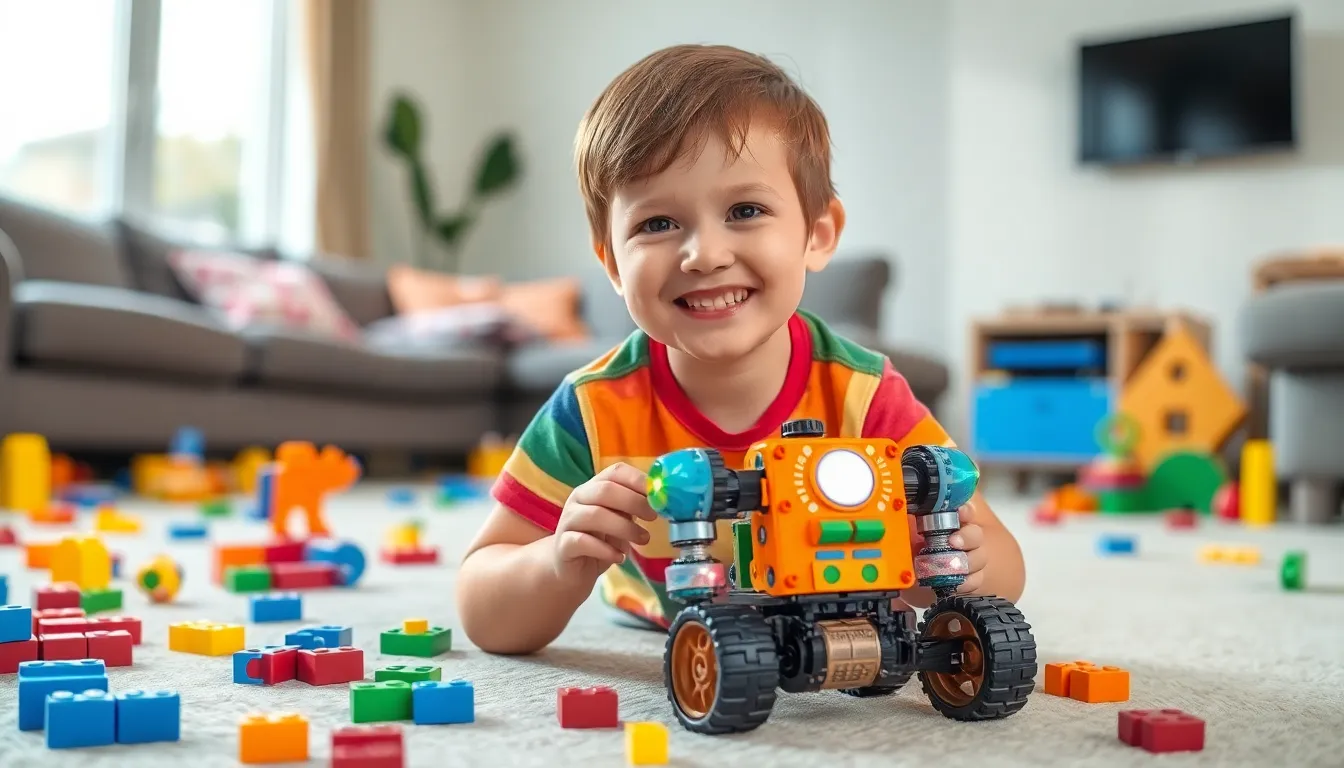
Robotic toys offer numerous advantages that support children’s development. These toys enhance creativity, foster STEM learning, and contribute to vital skill development.
Enhancing Creativity and Imagination
Robotic toys stimulate creativity and encourage imaginative play. Kids can customize robots, designing unique characters and scenarios. They often allow for freeform building and modification, promoting experimentation. Children can participate in storytelling through interactive features, which further nurtures their imagination. Engaging with these toys fosters innovative thinking as kids devise new methods to solve problems or complete tasks.
Promoting STEM Learning
Robotic toys serve as effective tools for promoting STEM (Science, Technology, Engineering, and Mathematics) learning. Children engage with basic programming concepts, developing algorithmic thinking. They face challenges that require logical reasoning, enhancing problem-solving skills. Many robotic toys come with educational resources, guiding children through the learning process with structured activities. Collaborative play with these toys supports teamwork and communication skills, essential for future academic and professional success.
Types of Robotic Toys for Kids
Robotic toys come in various types, each offering unique experiences that blend play with learning. Key categories include building kits and programmable robots.
Building Kits
Building kits provide children with components to construct their own robotic creations. These kits enhance problem-solving abilities, as kids learn to assemble parts and understand mechanical concepts. Popular building kits often include detailed instructions, guiding children through the construction process. Some examples include LEGO Mindstorms and UBTECH Jimu Robot kits. These kits promote creativity, allowing kids to personalize their designs while developing engineering skills.
Programmable Robots
Programmable robots allow children to learn coding through hands-on activities. These robots can be programmed to perform specific tasks using simple code, fostering critical thinking and logic. Brands like Sphero and Botley offer programmable robots that challenge kids with various activities and obstacles. These toys often come with user-friendly apps, making it easy for kids to experiment with different coding sequences. By engaging with programmable robots, children gain foundational programming skills and develop confidence in technology.
Safety Considerations
Safety is crucial when choosing robotic toys for kids. Both age appropriateness and material safety play significant roles in ensuring a safe play environment.
Age Appropriateness
Selecting robotic toys that match a child’s age enhances both safety and engagement. Manufacturers typically label age recommendations on packaging, guiding parents in making informed choices. Toys designed for younger children often feature softer materials and fewer small parts, reducing choking hazards. For older kids, more complex robotic toys can promote critical thinking while remaining suitable for their developmental stage. Ensuring toys are age-appropriate helps prevent accidents and supports effective learning.
Material Safety
Material safety is vital when considering robotic toys. Non-toxic, BPA-free plastics, metals, and other materials reduce health risks associated with play. Parents should look for toys that meet safety standards from organizations such as the Consumer Product Safety Commission (CPSC) or ASTM International. Certifications indicate that a product has undergone rigorous testing for safety. For electronic components, ensuring that toys have no exposed wires, sharp edges, or small detachable parts further safeguards children’s well-being. Prioritizing material safety ensures a worry-free play experience.
Popular Brands and Products
Numerous brands have emerged in the robotic toy market, each offering unique products that blend entertainment with educational value. Below are overviews of notable brands contributing significantly to children’s robotic toy experiences.
Brand A Overview
Brand A specializes in designing engaging robotic toys that encourage creativity and problem-solving. Their flagship product, the XYZ Robot, features customizable components, allowing kids to build and program their unique robots. Brand A emphasizes STEM education by incorporating coding through user-friendly apps, facilitating hands-on learning. The XYZ Robot regularly receives high ratings for its durability and interactive features, making it a favorite among parents and educators.
Brand B Overview
Brand B is recognized for its innovative approach to robotic toys that make learning fun. The ABC Coding Robot stands out for its simple interface and engaging challenges that introduce basic coding principles to children. With programmable instructions, it encourages experimentation and critical thinking. Brand B also focuses on safety through the use of non-toxic materials and adheres to all safety standards, ensuring parents feel confident in their purchases.
Robotic toys represent a transformative shift in how children engage with learning and play. By merging entertainment with educational value these toys not only captivate young minds but also equip them with essential skills for the future. As kids navigate the world of robotics they develop critical thinking creativity and collaboration skills that are vital in today’s digital age.
Parents and educators can feel confident in choosing these innovative tools knowing they promote safe and enriching experiences. With a variety of options available children can explore their interests while enjoying the benefits of hands-on learning. Embracing robotic toys is a step toward fostering a generation of curious and capable learners ready to tackle the challenges ahead.

